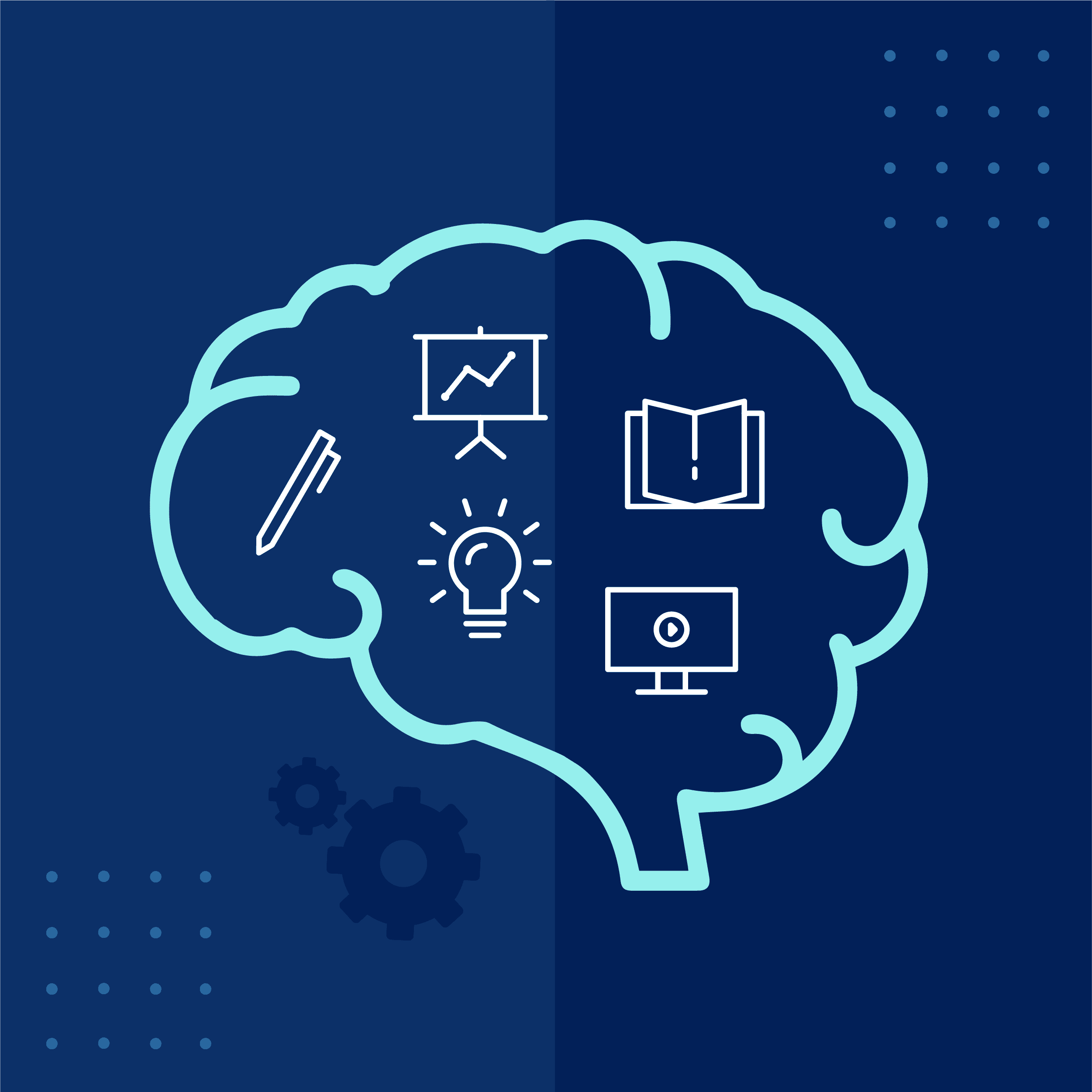This guest blog post was written by Dr. David Marshall, a technical writer and a training developer since 2007. He is also the owner of Neithdos Consulting Services LLC. Dr. Marshall received his DM in Executive Leadership from Colorado Technical University in 2021.
As a small business owner, it is important that your team maintains their skill proficiency level, learns the latest and greatest technology, and keeps in compliance with company policy and regulations. Since we are a company of three, it is easy to maintain training records for all of the team on a single laptop. However, what happens if the organization grows and several team members need to be trained to ensure compliance? This is where a Learning Management System, a type of online learning software, comes in handy.
In this blog, we are going to look at the Learning Management System to include its purpose, benefits, features, and what an organization needs to do before acquiring an LMS.
What is a Learning Management System
The Learning Management System or LMS is a software application that provides the framework that handles all aspects of the learning process. This application is used to create, house, deliver, and track training content. The LMS helps deliver training materials and organizes skill development within the organization. Other names for LMS are training management system, learning activity management system, or learning experience platform.
Purpose of an LMS
Whether you’re wanting to track employee learning progress or create online training content, an LMS software helps you do it all in one place. The purpose of an LMS is to make the training program easier to organize and maintain. It delivers and tracks training material for online learning within a single platform. The LMS helps out with:
- Identifying and assessing individual and organizational learning goals
- Track progress toward meeting those goals
- Collecting and Presenting data for the learning process
- Deliver content
- Onboarding
- Compliance
- Skills gap analysis
Deciding on an LMS
The use of an LMS within an organization has risen in the past two years. Approximately 83 percent of the organizations are currently using an LMS for their training needs. However, before an organization decides on an LMS, there are a few things to consider:
- Benefits of an LMS
- Which of the available LMS features fit the organization’s needs
- What are the specific learning goals for the organization
- An LMS helps streamline training delivery by minimizing the time spent on manual administrative tasks.
- Types of LMS
- Small medium business (SMB) vs. Enterprise
- The main difference is scale.
- The SMB should be a reliable tool that can create and deliver training.
- Main points are the speed to set things up and the ease of use
- Enterprise
- LMS with more power than in an SMB because the number of employees can range from 500 employees to thousands.
- LMS needs to be engineered from the group up to hand the large volumes of data and complexity.
- LMS need automate tasks
- Segment users
- Integrate with other tools
- Small medium business (SMB) vs. Enterprise
- Open source vs. Commercial
- Open source - free
- Requires installation, hosting, maintenance, and regular upgrades
- Can be more expensive at the end than a commercial LMS
- Commercial – Cost to set up
- Open source - free
- Installation vs. Cloud-based (SAAS)
- Most organizations are using cloud-based service.
- Having installed means the organization must adhere to specific industry legislation or network requirements.
- Integrated
- Can the LMS work with other software such as webinar tool integrations, payment gateways, and Customer Relationship Management (CRM)
- Course Creation
- Modern LMS allows the organization to create and distribute courses.
- Create presentations, documents, graphics, and videos
- Arrange the content in a course builder tool
- Arrange the content also in file types specific to eLearning such as SCORM and xAPI
Benefits of an LMS
The LMS centralizes the training by delivering consistent training and learning quality to all team members by supplying a single source for content, course materials, and instructions. The LMS allows the organization to track learning progress and performance and generate training reports on overall or student levels.
eLearning/Online Training
A benefit of LMS software is online learning and training. Even for eLearning courses and/or online training, the training department can easily track goal progress, knowledge gains, Return on Investment (ROI), and many other items using an LMS.
Meet Regulatory Compliance
Many organizations are required to train, assess, and report for compliance purposes. Examples of these industries include oil and gas, pharmaceuticals, communications, and construction. The LMS eLearning software will assist organizations in satisfying the legal and regulatory requirements.
Additional Benefits
Other benefits an LMS is able to provide include:
- Cost Savings
- Reduces employee travel
- Optimizes training expenditure and usage
- Minimizes facilities and paying instructors
- Lower administrative costs
- Lower facility costs
- Training Consistency
Specific Learning Goals
Whatever the learning path and initiative of the training material may be, the LMS must be able to help the organization reach specific learning goals. An example of some of the learning goals include:
- Safety certification updates
- Regulatory compliance
- Internal extended learning opportunities
- Public education for brand awareness or e-commerce
- The features that you need depend on the goals of the organization
- Key LMS Features
- Course creation
- Skills/Certification tracking
- Mobile Learning
- Asynchronous Learning
- Gamification
- Video conferencing
- Social Learning/message boards
- E-commerce and subscriptions
LMS Features
There are many features in an LMS that the market can offer such as creating training programs, enrolling learners, and reporting training completion. Each LMS feature is a great tool that can simplify these programs and training.
Before deciding on which LMS to get and what features should be included, the organization should focus on two things:
- Does the LMS create a great user experience for learners and administrative personnel?
- Does the LMS have the features required to deliver effective training?
The Top LMS Features include:
- Course Management
- SCORM & xAPI compliance
- Learning Portals
- Branding
- White-labeling
- Integrations
- Automations
- Learner Experience
- Exams
- Surveys
- Webinar integration
- Blended Learning
- Gamification
- Configurable user roles and permissions
- Groups
- Social Learning Tools
- Reporting
- Skills and Certification tracking
- E-commerce
- Learning paths
- Data migration
- Dynamic rules
- Notifications and Reminders
- Multilingual interface
- Security
- Reliability
- Responsive design
- Remote or mobile workforce ready
- Single Sign-on
Weighing the benefits, features, and company needs helps you decide on the best LMS platform to deliver your goals.
Summary
It was rumored that LMS is going away due to the advances in technology. According to the information above, the opposite is true because of the current skills gap affecting multiple industries, the desire for continuous education opportunities, especially for the millennials, and the lack of leadership skills within the organization. An LMS software is not only beneficial to track progress, but also offers a platform for learner engagement with online training and course material. Having the right LMS will result in improved employee retention, increased productivity, lower training costs, and better compliance.
Building a training program takes time and care. It is important to choose the right LMS that is able to deliver your training and content development needs.
References
- 8 Important LMS Features from your E-Learning Program by Tamara Scott - April 22, 2021
- What is a Learning Management System? And why do I need one by ShareKnowledge
- Top 29 Learning Management System Features You Should Consider by Katie-Anna Lynn, July 19, 2021










